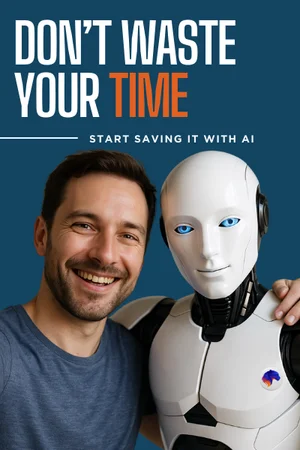What AI Can and Can’t Do in Your Marketing Stack

Artificial intelligence has become the hottest acronym in modern marketing—but not always the most clearly understood.
For lean teams trying to scale reach, speed up execution, and make smarter decisions, AI promises leverage. The right tools can save hours, optimize campaigns, and even generate content that doesn’t sound half bad.
Even though it is an incredible tool, AI isn’t magic.
It has clear strengths—and real limitations just like any other technology would.
Understanding both is critical if you’re building a marketing stack that’s fast, agile, and actually helps you grow. So let’s take a look at what AI can do in your stack—and just as importantly, what it can’t.
Where AI Delivers Real Value
AI excels at pattern recognition, repetitive tasks, and fast-turnaround content generation. In other words, it’s great at accelerating work you already know how to do—but don’t have time to scale.
Take content ideation and writing. Tools like ChatGPT, Jasper, and Copy.ai can generate headline options, social captions, email drafts, and blog outlines in minutes.
They’re particularly useful when you’re stuck in a blank-page spiral or need to translate a single insight into multiple formats.
However, you still need to guide the tone and angle, but AI can give you a strong first draft.
It’s also a lifesaver for personalization at scale. Email platforms like Klaviyo and ActiveCampaign now use AI to segment audiences dynamically, tailor product recommendations, and optimize send times. What used to take hours of spreadsheet sorting and logic trees now happens in the background, giving your subscribers emails that feel surprisingly relevant.
In analytics, AI helps surface trends before you’d normally catch them. Tools like Google Analytics 4 use machine learning to flag anomalies—like sudden drops in engagement or traffic spikes tied to a specific source—so you don’t need to monitor dashboards 24/7. Some tools go further, offering predictive metrics like churn risk or lead scoring based on past behaviors.
Even design workflows are speeding up. Platforms like Canva’s Magic Design or Adobe Firefly let marketers generate visual assets using text prompts or brand inputs. It’s not a replacement for design thinking—but it is a faster path to mockups and early concepts, especially for lean teams without an in-house designer.
AI also automates repetitive tasks that quietly eat up time. Think tagging content, writing meta descriptions, cleaning up CRM fields, transcribing videos, or summarizing meeting notes. These aren’t glamorous tasks, but they’re necessary—and AI handles them faster, with fewer errors, and less mental fatigue.
What AI Can’t (and Shouldn’t) Do
As powerful as it is, AI isn’t a strategist. It can remix content, mimic tone, and surface patterns—but it doesn’t understand your market, your positioning, or your customers’ emotional triggers.
That insight still has to come from you.
One common pitfall: expecting AI to write your entire brand narrative.
You can feed it a prompt like “Write a landing page for a B2B SaaS platform that helps teams work smarter,” and it will return something coherent.
But it won’t know what actually sets you apart unless you tell it. And if you rely too heavily on generic outputs, you risk sounding like every other AI-assisted startup in your space.
AI also struggles with true originality. It generates based on what it’s seen before—which means it’s good at replicating tone and format, not inventing new ideas. For example, if you’re launching a category-defining product, AI won’t know how to frame the story unless you already do. It can help refine or extend a message—but it’s not going to find the message for you.
Real-time context is another limitation.
Most AI tools don’t know what happened yesterday in your industry, or on your own team’s roadmap, unless you feed it that information. You’ll still need human judgment to factor in nuance, timing, and relevance—especially when writing time-sensitive content or responding to breaking news.
And while AI can support content production, it still needs quality control. Generative tools occasionally “hallucinate” facts, pull stats from nowhere, or invent sources. You have to fact-check, edit for clarity, and ensure that every piece of output aligns with your brand voice and values. Automation doesn’t replace accountability.
Finally, AI isn’t great at empathy because after all it’s not human.
It can mimic tone, but it doesn’t feel what your customer is feeling. It doesn’t understand their painpoints and circumstances.
This matters when crafting CTAs, responding to support issues, or shaping messaging around sensitive topics. If your goal is to build trust (not just get clicks) you still need a human lens.
So, How Should You Think About AI in Your Stack?
Think of AI as your fastest assistant—not your creative director.
It handles the grunt work, speeds up testing, and lets you do more with less. But it still needs leadership, inputs, and thoughtful oversight.
Use AI for:
- Brainstorming content formats, subject lines, and hooks
- Automating basic reporting and repetitive workflows
- Personalizing emails and landing pages at scale
- Generating visual or written drafts to work from
- Transcribing and summarizing internal content
Rely on humans for:
- Defining your strategy and positioning
- Setting brand tone and narrative structure
- Validating data, interpreting insights, and guiding creative
- Understanding real-time context and emotional nuance
- Making final decisions
As AI becomes more and more refined, the line between automation and creativity will continue to blur—but the best results still come from collaboration.
Your goal is to always guide AI where you need it to be!







